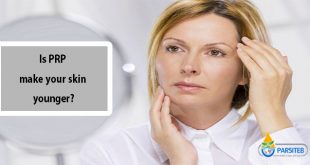Want to lower your risk of developing skin cancer, age spots, and wrinkles? Then a good sunscreen is the weapon to add to your arsenal.
Sunscreens help block some of the sun’s ultraviolet radiation from harming the skin. Two types of ultraviolet radiation — UVA (long-wave) and UVB (short-wave) — cause damage to your skin, increasing your risk of skin cancer and causing premature aging.
Share how you protect your skin from the sun »
UVB rays cause sunburns, and are a primary cause of skin cancer. UVA rays, which penetrate the skin more deeply, cause wrinkling, sagging, age spots, and a “leathery” appearance. They can also magnify the cancer-causing effects of UVB rays
What Does SPF Mean?
Commercially available sunscreens are rated by their sun protection factor (SPF). This measures their ability to block UVB rays. According to the Skin Cancer Foundation, most sunscreens with an SPF of 15 or more do well in protecting your skin.
Theoretically, the number indicates how much longer you can stay in the sun without burning. For example, if 20 minutes of sunshine would cause your unprotected skin to turn red, an SPF 15 sunscreen would protect you for about 15 times longer — or about five hours.
Depending on where you live, sunscreen can be a year-round requirement. It’s possible to get a sunburn even on a cloudy day, or through the window of a car or building. Many personal care products such as aftershave or makeup have SPF sunscreen (usually around SPF 15) built-in and can provide enough protection for everyday activities that require just a few minutes in the sun.
How Much Should You Use?
If you’re fair-skinned, take medicines that make you sun sensitive, or plan to spend a lot of time in the water or outdoors, you’ll need more protection. That means using waterproof sunscreen or frequently applying sunscreen to any exposed skin, and applying a lot of it — about an ounce at a time, or a shot glass full — and reapplying throughout the day. Remember, no sunscreen is effective longer than two hours without reapplication.
Make Your Own
During a long day at the beach or pool, you should use about half of an 8-oz bottle of sunscreen. That can quickly make a dent in your wallet.
But there are ways to make your own sunscreen. These homemade lotions and creams are effective, cost less, and may even be better for your health.
Leanna Cappucci, a holistic life, nutrition, and fitness coach, said she started replacing many of her family’s skincare products out of concerns about the impacts these products may have on the human genome.
Cappucci, who blogs at bedrockeats.com, also said she was concerned about unnecessarily stressing her three children’s immune systems with chemicals. The Environmental Working Group, she said, has cautioned against many chemicals in commercial sunscreens because they can disrupt hormones and cause allergic skin reactions.
She shared this do-it-yourself sunscreen she makes for her family:
- 1 cup organic coconut oil
- ½ cup shea butter
- ½ cup cocoa butter
- 1 cup beeswax
- 2 tbsp. of zinc oxide powder
Using a double boiler, melt the coconut oil, shea butter, cocoa butter, and beeswax until liquefied and smooth.
Remove the mixture from heat, and stir in the zinc oxide powder by hand to completely incorporate it.
Allow the mixture to cool until it starts to become opaque, then use a stick or immersion blender to whip it into a creamy consistency. Store the whipped mixture in the refrigerator until needed.
Cappucci said the coconut oil will naturally liquefy at about 76 degrees, so the mixture can easily be applied to your skin. Coconut oil and shea butter each have a natural SPF of about 4 to 6, she said, and adding the zinc oxide will give the mixture an SPF of about 20.
She doesn’t scent the mixture, but said you can add essential oils if you want to. However, you should avoid citrus oils, which can cause sun sensitivity. Now do your skin (and wallet) a favor and go make some sunscreen!
 Parsi Teb Physical and Mental Health Journal
Parsi Teb Physical and Mental Health Journal 

![RF [Radiofrequency treatment] (Part II)](https://en.parsiteb.com/wp-content/uploads/2019/08/parsi_teb-RF-Radiofrequency_treatment_2-310x165.jpg)

